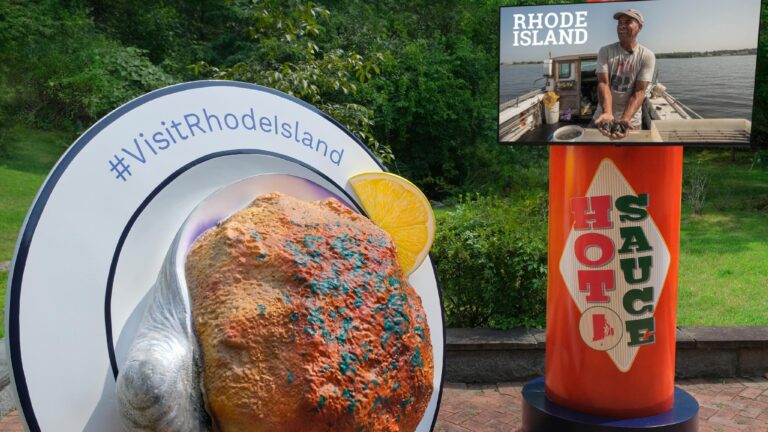Surroundings
The clam itself is a staple of clam chowders and in 1987, the Rhode Island Legislature designated the quahog the official “Rhode Island State Shell.”

Scientists, lawmakers, and those that make their residing from Rhode Island’s Narragansett Bay are teaming as much as hunt for the explanation why quahogs look like on the decline.
Quahogs have a protracted historical past within the state. The shells of the massive, hard-shelled clam had been utilized by the indigenous Narragansett folks as wampum. The clam itself is a staple of clam chowders and in 1987, the Rhode Island Legislature designated the quahog the official “Rhode Island State Shell.”
On Tuesday, a particular Rhode Island legislative fee held a listening to to review the lowered catch. The fee is taking a look at a variety of doable components that could be contributing to a lack of the signature shellfish, from oxygen deficiency to altering aquatic life and local weather change.
-

Explaining the ‘stuffie,’ a uniquely Rhode Island meals that’s making an attempt to draw vacationers
Quahogs — often known as little necks or cherry stones or chowder clams — are filter feeders drawing vitamins out of water columns. They don’t transfer a lot apart from the primary 2 to three weeks of their lives when they’re larvae, in line with Conor McManus, of the Rhode Island Division of Environmental Administration.
Quahogs will historically begin spawning in mid-June first in coves alongside Narragansett Bay and progress by means of the season. A second massive spawning can happen in July.
There was a peak within the harvest of quahogs within the Fifties earlier than the dredging of the clams was banned. There was a second peak within the Nineteen Eighties reflecting an enchancment in water high quality within the higher bay.
“Since then, we’ve seen a dramatic decline,” McManus mentioned.
There’s additionally been a decline within the variety of folks making an attempt to reap quahogs from historic highs of greater than 1,000 folks all the way down to about 400 folks a decade or so in the past, and now all the way down to 150 to 200 folks, he mentioned.
McManus mentioned the hunt for a solution to the quahog decline is complicated. For example, he pointed to occasions that may trigger a drop in oxygen within the water.
Usually, these hypoxia occasions are seen as a detrimental for organisms, however there’s additionally a competing idea that such episodes might assist quahogs as a result of it’d drive away potential predators.
“Over the course of a quahog’s life there’s a whole lot of uncertainty,” he mentioned.
Jim Boyd, a shellfisherman, mentioned that lower than half the variety of quahogs is being harvested from Narragansett Bay in comparison with a decade in the past and he and others who depend on quahogs want solutions.
To the business, it’s fairly clear that whereas there could also be many components for the drop, the first driver is the discount in vitamins wanted for quahogs to thrive, he mentioned.
“We actually want the division and the colleges to give attention to this query for us as a result of this business is taking a big hit over the past decade and our concern is that that is going to proceed within the coming years,” Boyd mentioned. “We’re seeing this gradual, methodical decline within the abundance of quahogs all through the bay.”
Different states alongside the Atlantic coast have additionally skilled declines in each quahogs in addition to additionally oysters, bay scallops and soft-shell clams, in line with McManus.
Quahogs feed on plankton. That additionally makes them key to the surroundings since plankton feeds on nitrates, which water therapy crops can’t filter out, making quahogs a pure supply for filtering impurities out of the water, in addition to being a sought-after meals.
The fee is charged with reporting again to lawmakers by Could 31, 2024.
Further Information Alerts
Get breaking updates as they occur.